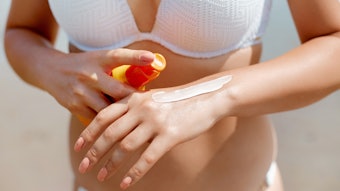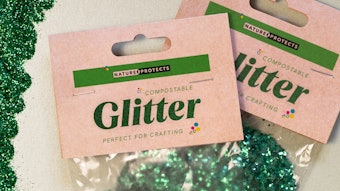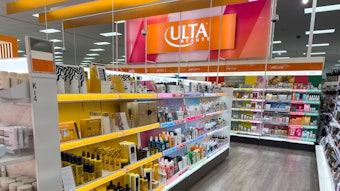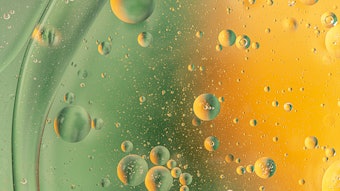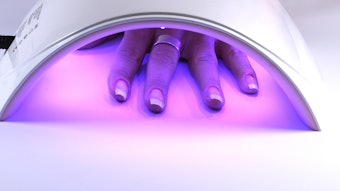Editor's note: This article originally in the January 2014 issue of Skin Inc. magazine. Reprinted with permission, and all rights reserved.
Each and every year, there are multiple new skin care brands entering an already-overcrowded space. Many try to garner attention by touting a new, magic ingredient and others by attacking established, scientifically proven ingredients.
A simple truth that sets the stage for separating ingredient fact from fiction: It is the dose of an ingredient, more than the ingredient itself, that determines toxicity. A related corollary is that the form of an ingredient can affect its efficacy, as well as whether or not it is potentially toxic.
Is it fair to say water is a nontoxic ingredient? Yes; however, if you ingest too much water, it can have a deadly effect. You can draw the same conclusions on a plethora of ingredients.
Separating Fact from Fiction
There are myriad ingredients that have been subject to misinformation based on shabby research, personal opinions and self-interest, including vitamin A, propylene glycol, parabens, mineral oil and disodium ethylenediaminetetraacetic acid (EDTA).
Vitamin A. If there is a universal ingredient in skin care that has received unprecedented support, it is vitamin A. As early as 1938, researchers have documented both the need for vitamin A in skin care, and its role in constructively ameliorating photodamaged skin.1–5 It is reasonable to assert that there have been several hundred articles that have appeared in refereed scientific journals that attest to the safety and efficacy of vitamin A.
Some websites, blogs and brands indicate that vitamin A is a known human reproductive toxicant. Yet, much research shows that vitamin A is safe for use in cosmetics. In fact, vitamin A is alleged to be one of the most effective—if not the most effective—ingredient in anti-aging skin care.1 Like anything else, if you go to extremes and submerge the body in high doses of retinoic acid thousands of times the amount used in skin care products, it will harm you. But, is that reasonable? There is no proof, despite rumors and assertions, that the levels of vitamin A in cosmetics cause cancer or organ toxicity.
Propylene glycol. A much-maligned ingredient, propylene glycol is safe for use in cosmetics.6,7 According to the U.S. Food and Drug Administration’s (FDA) Cosmetic Ingredient Review’s (CIR) National Toxicology Program, there is negligible, if any, concern related to its use. In fact, it is safe to eat. This ingredient comes in two forms: vegetable sources and synthetic sources, such as petroleum. It is safe in cosmetic use and no toxicity was found at dose levels used in skin care. The concentration in cosmetic preparations is normally under 2%. The CIR stated it is safe in concentrations up to 50%.7 There is no scientific evidence or truth to the assertions that, in the form and dose used in skin care, it causes cancer, or brain, kidney or liver damage. There are no histological refereed studies that prove the rumor that, in concentrations used in skin care, propylene glycol removes the acid mantle of the skin.
Parabens. One of the most controversial and researched preservatives are parabens. Health concerns include links to the development of breast cancer and reproductive toxicity, as well as immunotoxicity and neurotoxicity. Many are surprised to learn that parabens are nature’s way of providing self-preservation for many naturally occurring fruits and vegetables, including blueberries, strawberries and carrots. Parabens have been deemed safe, after multiple studies by the FDA, the Japanese Ministry of Health and the European Commission. Published in the International Journal of Toxicity in 2008, the CIR reported on more than 65 studies by independent scientific researchers, documenting that exposure to 840 times the amount of parabens found in cosmetics caused no adverse effects. Further, parabens do not accumulate in the body and, if there are any excess parabens, they are easily eliminated from the body.
Parabens have been the subject of much misinformation, rumor-mongering and unfounded hype about their dangers based on a few poorly designed studies.8 The FDA reviewed 110 studies and confirmed that there is no basis for concern.9–11 Lastly, in order to claim an estrogenic effect from parabens, the dosage would have to be 25,000 times that found in cosmetics.12
Mineral oil. The highly refined, pharmaceutical-grade of mineral oil has been an effective ingredient in skin care.13 It has been proven that it has no adverse effect on the stratum corneum.14,15 Mineral oil has been shown to improve skin softness and is a safe ingredient that removes excess oil and can help dissolve comedones. Its value in treating oily skin is unquestioned. The claims that today’s pharmaceutical-grade mineral oil is carcinogenic are false with no data to support them.13,15–17
Disodium EDTA. Disodium EDTA and its salts are used as chelating agents in cosmetics. The typical concentration is less than 2%. The CIR expert panel recognized this ingredient as safe. A definitive research document on the safety of disodium EDTA was published in the International Journal of Toxicology. Spanning 47 pages referencing more than 250 articles and research studies, this report concludes, without reservation, that the use of disodium EDTA is safe for use in cosmetic formulations. Despite this overwhelming evidence, there are still claims that question the safety of disodium EDTA.
The Importance of Education
How do you separate fact from fiction, fear-mongering from science, marketing hype from truth? The best bet is to ask the right questions and follow up with a persistent search for independent, third-party scientific documentation. Too much of what is communicated to brand owners and marketers comes from individuals and companies driven by self-interest. Demand proof of claims and, if someone is attacking an ingredient’s safety, seek out the other side of the assertion. There are always two sides to the stories you hear or read about.
When searching for information, do not stop at the first few sites that come up. Take the time to look deeper as you search for information. Visit sites that are founded in scientific research, chemistry and toxicology. Seek out information outside of the traditional organizations, company information and websites. Remember, you have a responsibility to your brand, your customers and yourself to become well informed about the truth.
References
- F Wise and MB Sulzberger, The 1938 Yearbook of Dermatology and Syphilology, Year Book Publishers, Chicago (1938)
- B Berne, M Nilsson and A Vahlquist, UV irradiation and cutaneous vitamin A: an experimental study in rabbit and human skin, J Invest Dermatol 83 401–404 (1984)
- AM Kligman, GL Grove, R Hirose and JJ Leyden, Topical tretinoin for photoaged skin, J Am Acad of Dermatol 15 836–859 (1986)
- J Fuchs, ME Huflejt, LM Rothfuss, DS Wilson, G Carcamo and L Pack, Acute effects of near ultraviolet and visible light on the cutaneous antioxidant defense system, Photochem Photobiol 50 739–744 (1989)
- D Alberts, Safety and efficacy of dose-intensive oral vitamin A in subjects with sun-damaged skin. Clin Cancer Res 10 6 1875–1880 (2004)
- ijt.sagepub.com/content/13/6/437.short (Accessed Nov 12, 2013)
- Cosmetic Ingredient Review Expert Panel, Final report on the safety assessment of propylene glycol and polypropylene glycols, J Amer Coll Tox 13 (6) 473–491 (1994)
- PD Darbre, Environmental oestrogens, cosmetics and breast cancer, Best Pract Res Clin Endocrinol Metab 20 1 (2006)
- DK Mirick, S Davis and DB Thomas, Antiperspirant use and the risk of breast cancer, J Natl Cancer Inst 94 20 1578–1580 (2002)
- www.ncbi.nlm.nih.gov/pubmed/19101832 (Accessed Oct 29, 2013)
- www.cosmeticsdesign-europe.com/Formulation-Science/New-data-on-parabens-suggests-no-adverse-hormonal-effect-on-the-body (Accessed Nov 11, 2013)
- JR Byford, LE Shaw, MG Drew, GS Pope, MJ Sauer and PD Darbre, Oestrogenic activity of parabens in MCF7 human breast cancer cells, J Steroid Biochem, 80 49–60 (2002)
- AV Rawlings and KJ Lombard, A review on the extensive skin benefits of mineral oil, Int J Cosmet Sci 34 5411–5518 (2012)
- SM Peck and AW Glick, A new method for measuring the hardness of keratin, J Soc Cosmet Chem 7 6 530–540 (1956)
- MM Rieger and DE Deem, Skin moisturizers II the effect of cosmetic ingredients on stratum corneum, J Soc Cosmet Chem (25) 253–264 (1974)
- ec.europa.eu/consumers/sectors/cosmetics/documents (Accessed Nov 12, 2013)
- www.accessdata.fda.gov/scripts/cdrh/cfdocs/cfcfr/CFRSearch.cfm?fr=172.878 (Accessed Nov 12, 2013)
Carol Trow began her career as a nurse and later transitioned into the field of professional service marketing as the director of marketing for a Fortune 1000 company. She went on to start a marketing firm that specializes in practice enhancement for plastic surgeons, cosmetic dermatologists and medical spas. Carol has 20 years of experience in the medical skin care field working with Environ. Trow and her husband own DermaConcepts, the exclusive United States distributor of Environ Skin Care.
Rob Trow has published more than 100 articles on skin care covering both the science of serious skin care and practical business solutions to operating a professional skin care practice. Trow speaks frequently on current and emerging topics of interest at national and international meetings, as well as to medical spas, estheticians and physicians.
